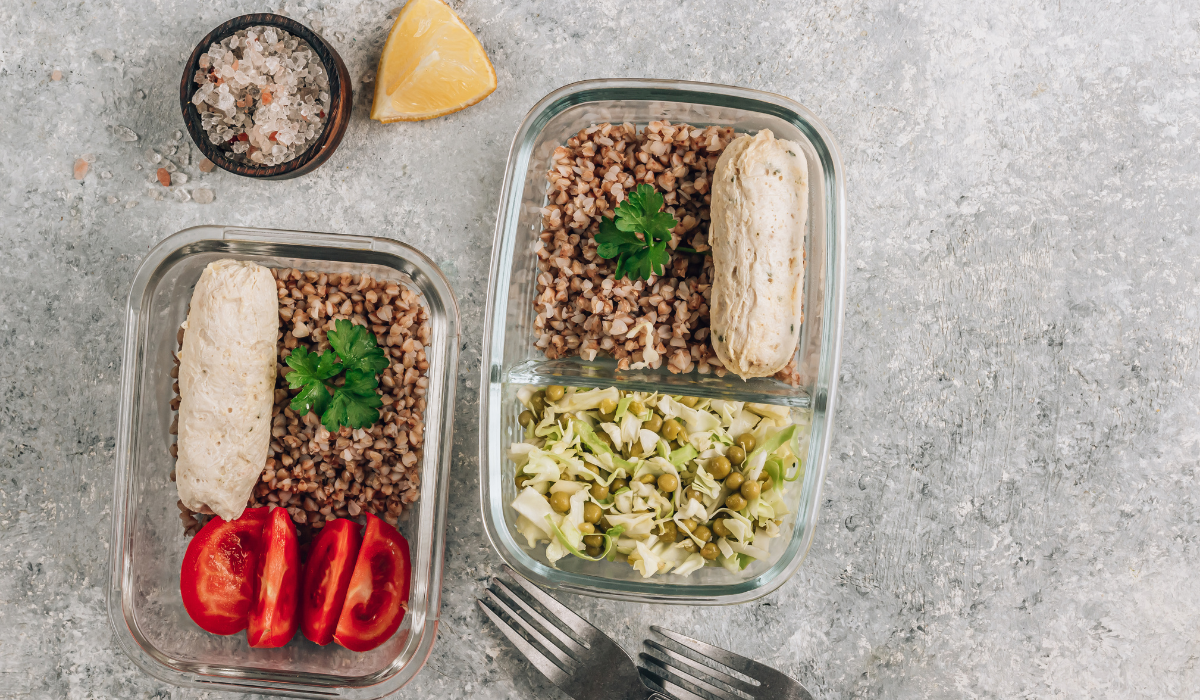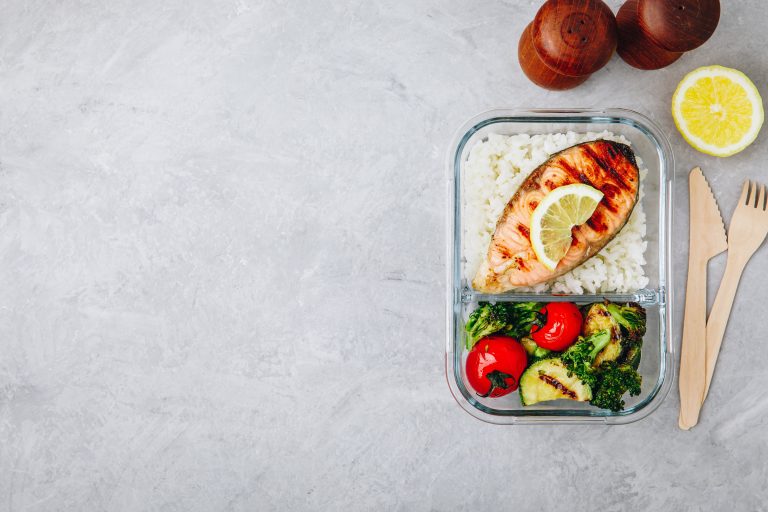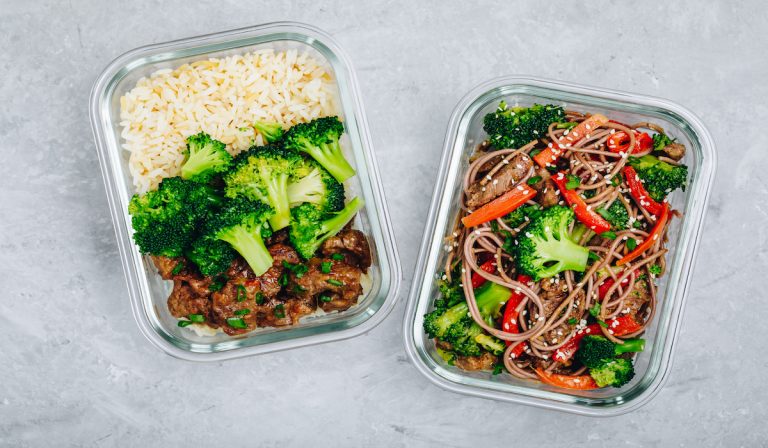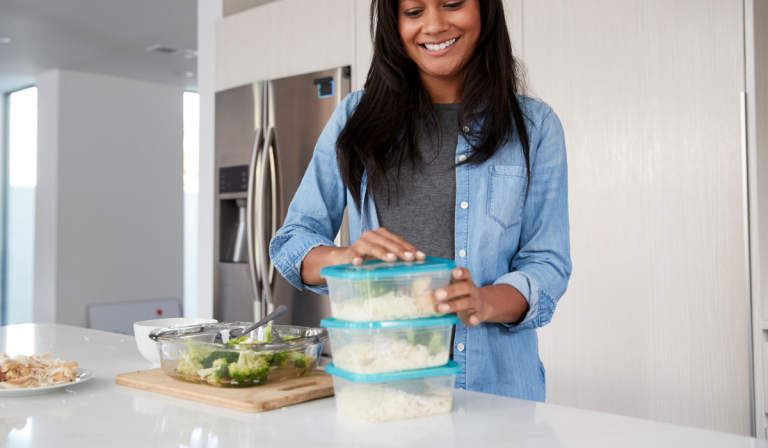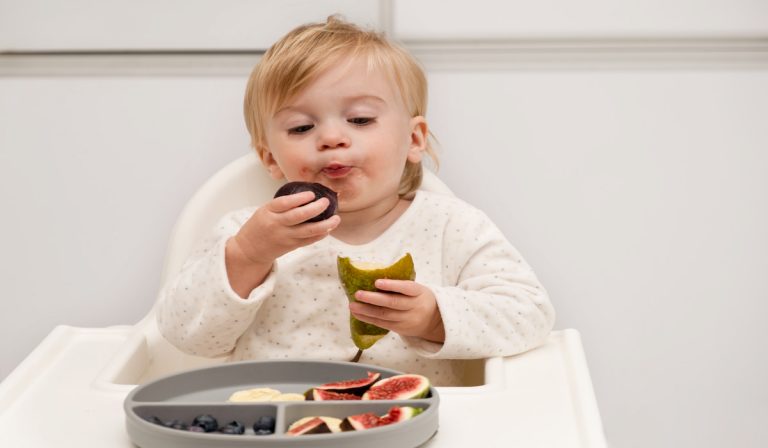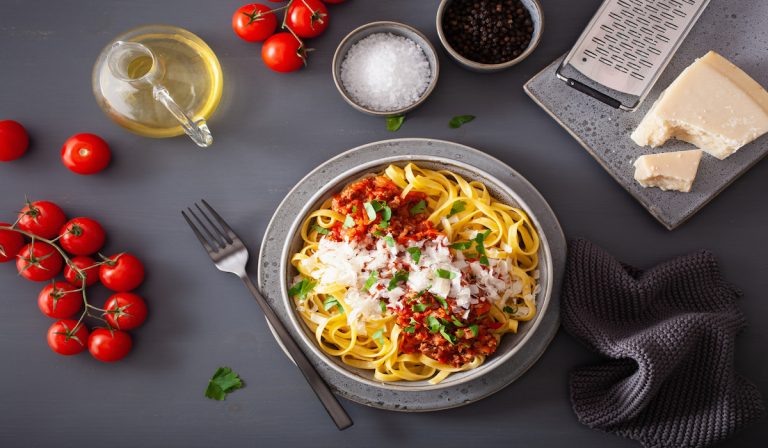Can You Freeze Rice for Your Meal Prep? (If Yes, How To?)
As your meal prep journey continues, other questions may bubble up. What foods refrigerate or freeze best, staying fresh and enjoyable to eat even if they’ve already been in the fridge for half the week?
It’s a process of trial and error to find the right foods, especially with the limited options available to you, the preferences of those in your family, and their allergies to and tolerances of food.
You decided to do fried rice, but now you’re wondering if you can freeze rice and still enjoy it when it is reheated later in the week! Or perhaps you use rice commonly throughout your meals, and you’re wondering if freezing rice will work before you begin attempting meal prep.
Quick, help me figure this out before I go to the store and buy the rice! Do I need to change my menu?
Can you freeze rice for your meal prep?
Cooked rice can be frozen and reheated successfully if you store it properly and defrost it before reheating it.
We’ll talk about the advantages and disadvantages of different methods of storing your meal prep later in the article. Read on to learn more about meal prep, freezing your food, and, specifically, freezing rice!
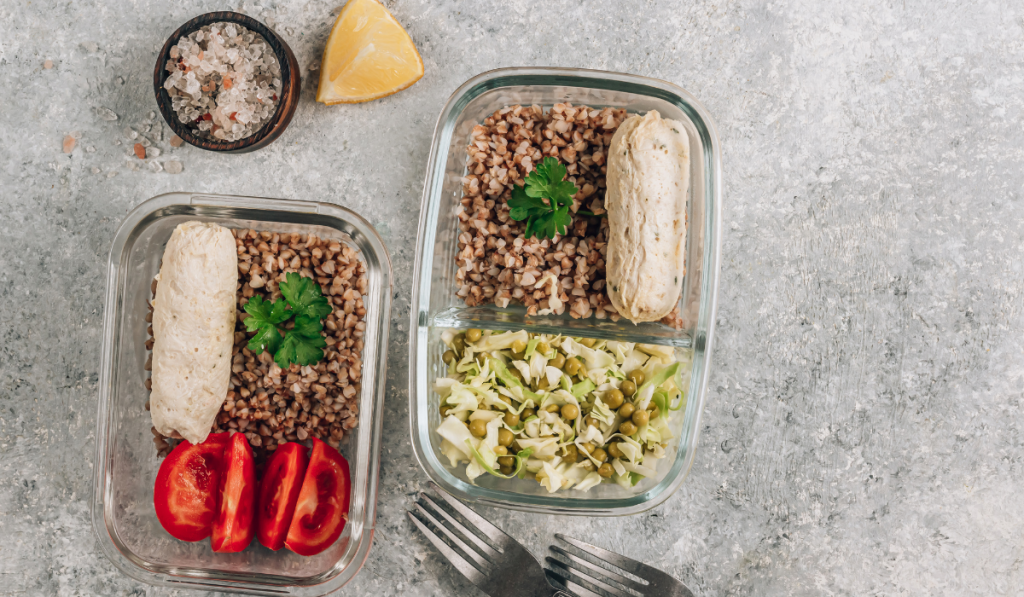
Can You Freeze Meal Prepped Rice?
Regardless of the reason, you’ve decided or needed to freeze your meals during the week. You’ve planned at least one, maybe several, meals that include rice.
But even refrigerating rice makes it kind of weird — it gets hard and dry. You shudder to think what might become of it in the freezer.
Is it worth making meals that have rice in them, or will they taste bad? Is it worth preparing meals together if I can’t store rice efficiently? Yes, it is! Rice can be frozen and reheated successfully.
Before you ask, yes, you can freeze any type of rice!
From sticky to jasmine, to brown, to wild and quinoa, you can freeze rice cooked or uncooked (to keep its shelf life prolonged).
However, for meal prep, you’ll want to ensure it’s cooked beforehand and even mixed in with other foods if it’s part of fried rice or a stir-fry.
How to Store Prepped Rice in the Freezer
To freeze your rice after it is cooked and prepared (so it’s ready to be heated up and eaten at any moment), store it in an airtight freezer bag or container.
When using a bag, try to squeeze out as much air as possible and store it flat. This way, it will defrost faster, which you want when using a meal with rice for meal prep!
Bags are preferable to using containers because of this fact. Stacking and compacting rice into Tupperware will make its defrosting period much longer.
How to Defrost and Reheat Frozen Prepped Rice
The rice will need to defrost before reheating.
The night before you need to eat the rice meal, or the morning of, put the bag or container of rice in the refrigerator so it can begin to soften.
Then, when it’s time to eat, put the rice into a bowl, add a little water to soften the rice, cover it with plastic wrap, and stick it in the microwave for a couple of minutes. This will heat the rice and make it soft and fluffy like before!
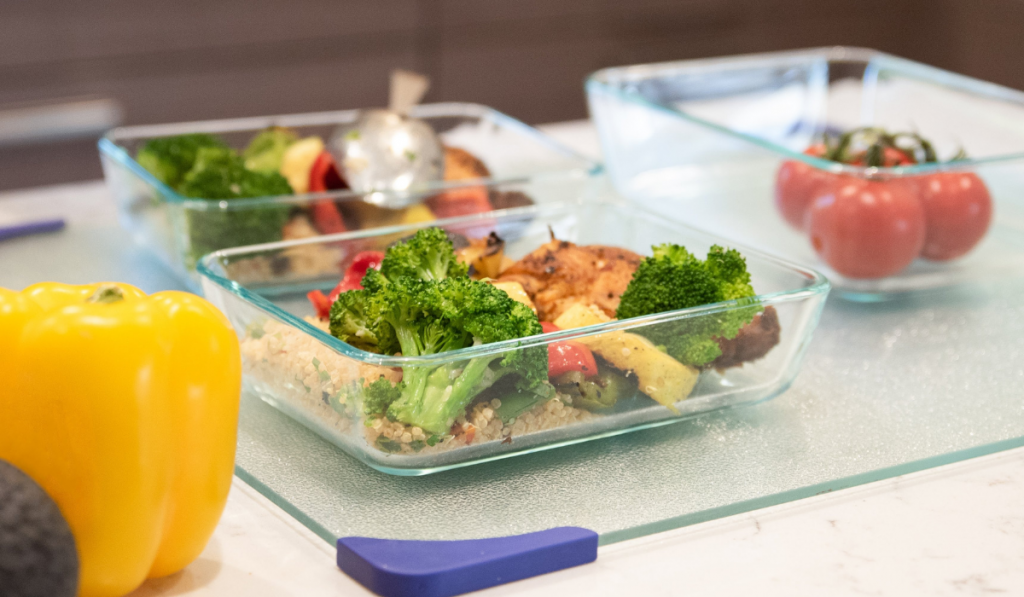
What Is Meal Prep and Its Benefits?
Meal prep is when you plan out, buy ingredients, and cook your meals in advance so that they are stored away and easily accessible throughout the week.
You must have specific meals dedicated to each breakfast, lunch, and dinner so that you know exactly which ingredients to buy at the store and how much of each food you need.
Meal planning will save you money, as buying a bunch of foods and ingredients you generally like without a plan will lead to overspending on food or to running out of food and having to spend more money and time going back to the grocery store midweek.
Portions may get warped, as you may dip into all of your chicken tenders on one day when they were supposed to last throughout the week!
When you use meal prep, you know that you are having a specific meal on Monday for dinner and that you can only eat that meal for dinner. You dish it up evenly (or by portion size based on age and preference) and eat.
If food isn’t firmly assigned to a specific meal and day, you may run out of food later in the week.
Typically, if you’ve decided that meal prep is best for your family, you are too busy during the week to make more food, so it’s important to make sure it can last.
The specific meals don’t always have to be different – if you want to eat the same simple meal for breakfast every morning and the same meal for lunch (or have dinner leftovers for lunch), that’s fine! Or have a couple of options you switch off every other day to add some variety!
Just make sure you know exactly what each meal is, and you know how much you need to buy in bulk to last throughout the week.
Some people may find, to save money, that it’s easiest to eat the same breakfast, same lunch, and same dinner every week. This is a very budget-friendly method, as you just need to buy one set of ingredients for each meal rather than a variety, which can always be expensive.
If you find healthy meals made with the cheapest ingredients, that’s even more of a bonus! It’s also essential to buy the ingredients and make food in advance.
If you don’t make the meals before the week begins, it’s not really meal prep; it’s just regular shopping.
Getting back from the store and proceeding to make the meals you’ll need during the week is what makes your efforts meal prep.
This way, the food is cooked, put in containers, stored in the pantry, fridge, or freezer, and is ready to be pulled out at a moment’s notice.
It’s a bonus if the prepped food only needs a minute in the microwave to be edible!
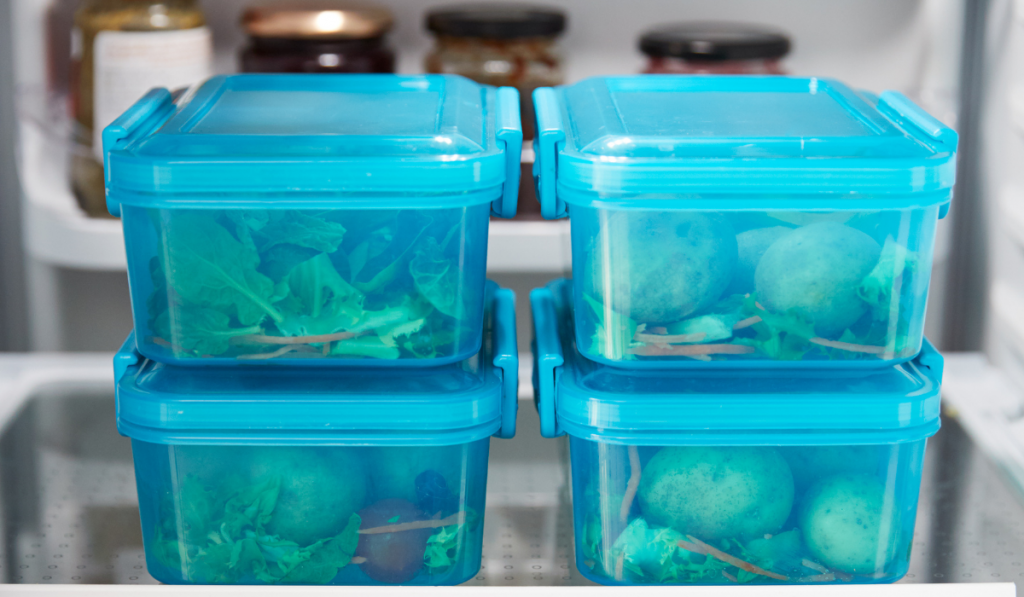
Storage Tips: Pantry, Fridge, or Freezer
Speaking of the places you can store your food, a pantry is best for items that won’t go bad sitting at room temperature.
Since most of your meals will not be able to sit in the pantry because they are fully prepared, freezers can also be used.
Food stays fresher for the longest time when in the freezer, especially meats and other perishables. However, frozen food takes longer to reheat.
If you want your frozen prepped food as fresh as when it was first made, you’ll want to reheat it in the oven or an air fryer.
If you use the microwave, it will most likely get soggy, and no one wants food like that!
Refrigeration is probably your best option when it comes to meal prep.
You’re only preparing meals for the next week, so it should all keep rather well in the fridge – only a few food items could go bad, such as fruits or meats, which you’ll want to look into when buying groceries for the week.
A fridge keeps your food chilled and preserved throughout the week, but not frozen solid like a freezer, which creates excess water and makes it a much harder and a much longer process to heat up.
However, you may not be able to fit all of your meals in the fridge. Or, perhaps, they may go bad if they are left in the fridge instead of the freezer because you decided you wanted a specific, perishable food for Friday’s dinner.
If you have to put your food in the freezer rather than a refrigerator, it may be a good idea to set it in the fridge the night before you eat it or the morning of so it’s softened in time for dinner.
This way, it isn’t rock-solid and has already thawed enough to be reheated.
Use an Air Fryer for Reheating
Air fryers use hot air pushed around the food basket, which keeps your food crispy and dry.
You can also use an oven, but the air fryer is quicker than an oven because it doesn’t take a long prep time to preheat before use.
Your food can be heated in under ten minutes in an air fryer.
Pro tip: depending on what you’re eating, using an air fryer is a great way to reheat your food without it being soggy!
If you’re ever heating something breaded or bread-related, such as chicken tenders, pizza, or frozen muffins, an air fryer would be an excellent investment for your meal prep to keep the reheat time quick and enjoyable.
